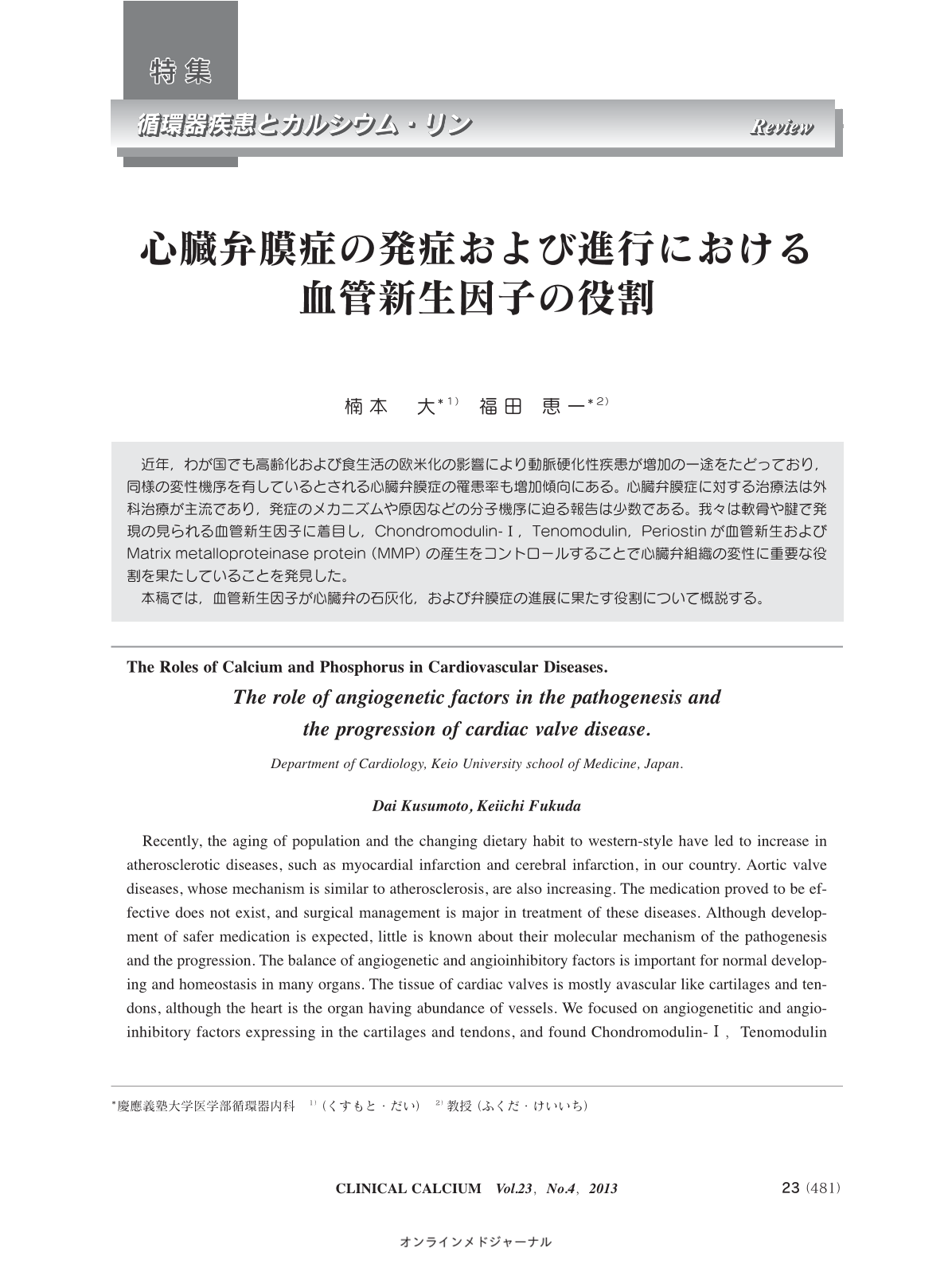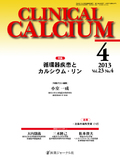Japanese
English
- 有料閲覧
- Abstract 文献概要
- 1ページ目 Look Inside
- 参考文献 Reference
近年,わが国でも高齢化および食生活の欧米化の影響により動脈硬化性疾患が増加の一途をたどっており,同様の変性機序を有しているとされる心臓弁膜症の罹患率も増加傾向にある。心臓弁膜症に対する治療法は外科治療が主流であり,発症のメカニズムや原因などの分子機序に迫る報告は少数である。我々は軟骨や腱で発現の見られる血管新生因子に着目し,Chondromodulin- I,Tenomodulin,Periostinが血管新生およびMatrix metalloproteinase protein(MMP)の産生をコントロールすることで心臓弁組織の変性に重要な役割を果たしていることを発見した。 本稿では,血管新生因子が心臓弁の石灰化,および弁膜症の進展に果たす役割について概説する。
Recently, the aging of population and the changing dietary habit to western-style have led to increase in atherosclerotic diseases, such as myocardial infarction and cerebral infarction, in our country. Aortic valve diseases, whose mechanism is similar to atherosclerosis, are also increasing. The medication proved to be effective does not exist, and surgical management is major in treatment of these diseases. Although development of safer medication is expected, little is known about their molecular mechanism of the pathogenesis and the progression. The balance of angiogenetic and angioinhibitory factors is important for normal developing and homeostasis in many organs. The tissue of cardiac valves is mostly avascular like cartilages and tendons, although the heart is the organ having abundance of vessels. We focused on angiogenetitic and angioinhibitory factors expressing in the cartilages and tendons, and found Chondromodulin- I,Tenomodulin and Periostin have crucial roles in degeneration of the cardiac valve by controlling angiogenesis and production of Matrix metalloproteinase protein(MMP).Now, we review the mechanism of cardiac valve disease focusing on the role of angiogenetic factors.



